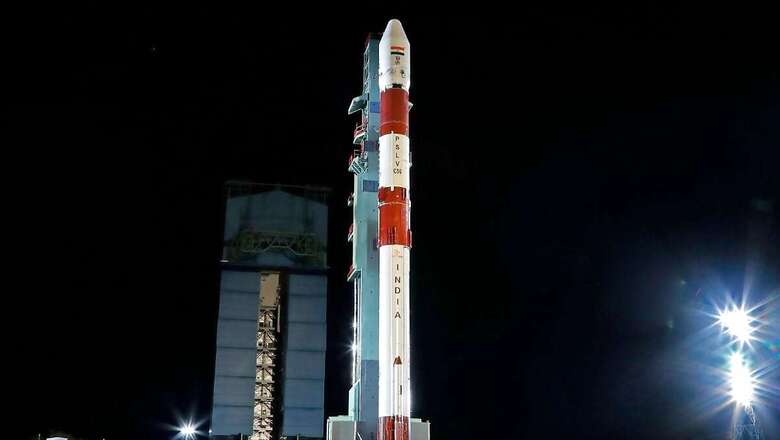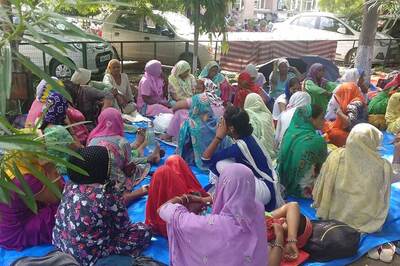
views
The historic success of Chandrayaan-3 has made ISRO the talk of the town with its rise a testament to India’s space diplomacy. Not only that, India’s G20 presidency coincided with the soft landing on the south pole of the moon, where no other country has ventured.
When it comes to space, scientific collaboration is crucial and the results are meant to be shared for the greater good: India’s space odyssey lives by these principles and is a blueprint for other aspiring countries.
Be it Chandrayaan-3 or the South Asia Satellite, India has become a force to reckon with amid a cut-throat geopolitical race to the finish. Collaborations bring together expertise, resources and data from different countries and institutions, speeding up discovery and innovation. It also allows researchers to tackle complex issues with a global perspective, fostering knowledge exchange, infrastructure sharing and diplomatic ties.
Harnessing diplomacy via Chandrayaan-3
Chandrayaan-3 is ISRO’s latest achievement but the space agency was not alone in attempting this feat. The ground stations of NASA and ESA had a significant role to play when it came to tracking the trajectory and health of the spacecraft.
Ground communications are at the core of any space mission and ISRO takes pride in its advanced 32-metre deep space tracking station located in India. This facility empowers scientists to accurately locate, track, command and receive telemetry data. As the earth rotates, however, the vantage point is not constantly available to track the spacecraft from one location. A number of ground stations are required to keep an eye on the spacecraft but this means significantly higher costs. But ISRO’s cost-efficient space missions skilfully use diplomacy and positive relationships with other space agencies to balance its expenses.
Here’s how foreign space agencies backed the Chandrayaan-3 mission:
ESA’s 15-metre antenna at Kourou in French Guiana and the 32-metre antenna belonging to Goonhilly Earth Station in UK were communicating with Chandrayaan-3 mission on a regular basis, providing a complete communication channel between the mission operations team in Bengaluru and the Chandrayaan-3 satellite.
ESA’s 35-metre deep space antenna in Australia’s New Norcia, a third ground station in the Estrack network, was also set up to serve as a communications backup with the Vikram lander in the run-up to its crucial landing on the moon.
NASA Deep Space Network was providing telemetry and tracking coverage during the powered descent phase from Deep Space Station (DSS) 36 and DSS 34 at Canberra Deep Space Communication Complex followed by DSS 65 at Madrid Deep Space Communication Complex.
Primary support for the mission came from the Deep Space Network complex in California because it is exactly on the other side of the earth from India and can be in view of the moon when the station in India cannot see it.
This is not the first time that ISRO has collaborated with foreign countries. The space agency has collaborated and cooperated with NASA, ESA, Russia’s Roscosmos, France’s CNES and Japan’s JAXA.
NISAR to Artemis Accords: Space alliance with NASA
In 2008, ISRO’s Chandrayaan-1 included a moon impact probe (MIP) designed for the lunar surface. NASA’s Moon Mineralogy Mapper, or M3, was also onboard Chandrayaan-1 and helped discover the presence of water molecules on the moon. Chandrayaan-1 also carried payloads from ESA, Bulgarian Aerospace Agency, and other institutions from North America and Europe. NASA also provided communications support to India’s Mars mission, Mangalyaan.
India’s space agency, too, provides support to NASA as the American space agency Landsat 8 satellite includes a thermal infrared sensor (TIRS) developed by ISRO. It is used to monitor the earth’s surface temperature and was integrated into the satellite to replace a similar sensor that failed to function.
The biggest collaboration between ISRO and NASA is also in the making. The NISAR Mission is the most expensive earth-observing mission at a cost of $1.5 billion and will be launched from Indian soil. It will observe the entire planet every 12 days, and this mission will not just elevate the remote-sensing capabilities of the two countries but also benefit the world with its advanced technologies to study the climate, ecosystems and seismic activity.
India has also signed the Artemis Accords with the US, opening up opportunities for future collaborations on planetary exploration and even manned missions.
India and Russia: Time-tested space partnership
ISRO is also working with Russia’s Roscosmos on its Gaganyaan mission. The four cosmonauts shortlisted for India’s first manned space mission completed their training in Russia.
India’s regional navigation satellite system NavIC (Navigation with Indian Constellation) and Russia’s GLONASS (Global Navigation Satellite System) have cooperated to improve the accuracy and reliability of navigation signals.
In the past, too, ISRO has used Russian Soyuz launch vehicles to deploy several of its satellites into orbit. In the 1990s, ISRO acquired cryogenic engine technology from Russia to develop its GSLV Mk II. ISRO has launched Russian satellites using PSLV and GSLV, showcasing India’s launch capabilities and expanding its commercial launch services.
ISRO space tech largesse to South Asia
ISRO has shared satellite data with multiple countries for disaster management, weather forecasting, agricultural monitoring and environmental studies. The South Asia Satellite, also known as GSAT-9, was launched to provide communication and broadcasting services to SAARC countries.
Projecting the 2230-kg communication spacecraft launched in 2017 as India’s “priceless gift” to its neighbours, Prime Minister Narendra Modi said the “unprecedented” development sends out a message that “even sky is not the limit when it comes to regional cooperation”. Called India’s technology largesse from the sky, the satellite will prove to be a boon in the entire region’s progress. It seeks to strengthen the bond between Afghanistan, Bangladesh, Bhutan, India, Maldives, Nepal and Sri Lanka.
ISRO has also provided technical assistance and capacity-building support to Bangladesh’s space agency, Bangladesh Telecommunication Regulatory Commission (BTRC), for the development of the Bangabandhu-1 satellite. It has also trained scientists from the neighbouring country, shared technological expertise and provided remote sensing data.
Sri Lanka enjoys a similar relationship with ISRO, which has launched several satellites for the island nation using its launch vehicles. These launches have enabled Sri Lanka to place its satellites into orbit, expanding the country’s space capabilities. For example, the Ravana-1 satellite, developed by Sri Lankan engineers, was launched by ISRO in 2019 as a part of a larger payload.
Antrix Corporation, ISRO’s commercial arm, offers satellite launch services to different countries. Over the years, the space agency has launched satellites for US, UK, Canada among others, generating revenue and fostering international partnerships. It has offered navigation and communication services to neighbouring countries using its navigation satellite system, Indian Regional Navigation Satellite System (IRNSS) or NavIC. This system aids in applications like disaster management and resource mapping.




















Comments
0 comment